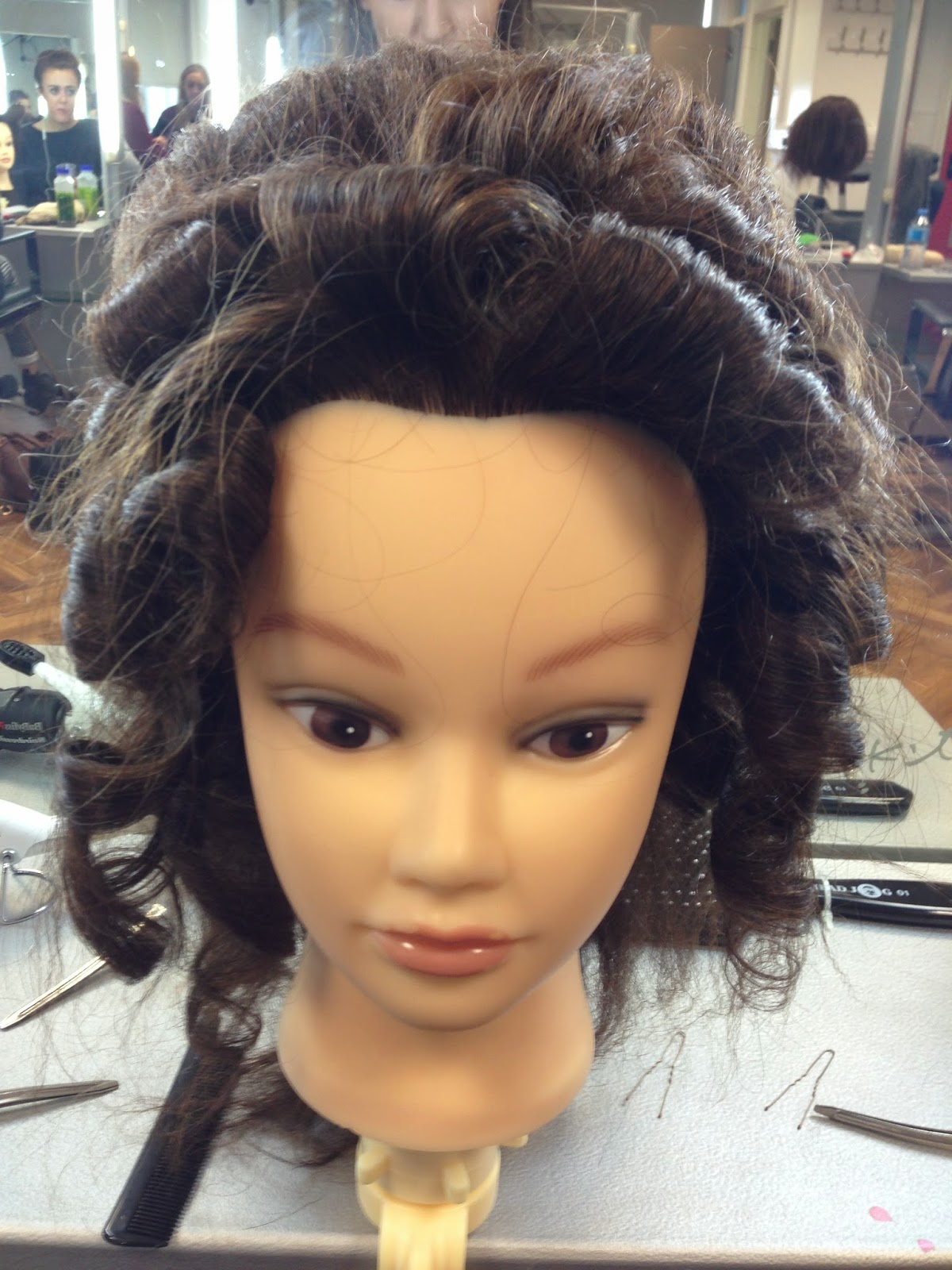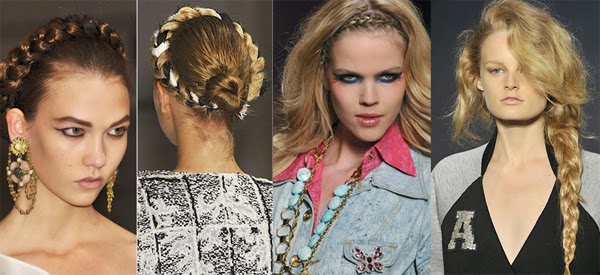 |
| Hair Receiver http://www.extremecostuming.com/articles/twoelizabethanhairstyles.html |
Once the lady had acquired a substantial amount of hair, they would use it as padding in a hair net. For our practical however, we used tights and tissue. I decided that in my design I wanted one rat, going around the top of the head, like an alice band, from ear to ear on top of the hair. I sectioned the hair into 4, horizontally across the head. The front section was to be curled for decoration, and the section immediately behind that to be crimped for volume. The third section was where i would french plait from ear-to-ear, as an anchor for the rat, and behind that the hair was crimped again to create volume, as the Elizabethans aimed to have tall and big hair. Once I had crimped and curled the hair, I plaited the hair, and anchored down the rat using kirby grips. With the crimped section at the front, I folded this over and tucked under the rat, to create a roll. I then decorated the front using the curls.
-(Isobel Bedingfield, October 2004. 'Extreme
Costuming' (online). [viewed 17/10/2014] available from: http://www.extremecostuming.com/articles/twoelizabethanhairstyles.html)
In our following practical with Helen, we experimented with rats, but the design had to be symmetrical. I chose to use two rats in this design, running down the head from the forehead to the back of the head. I used the pin-frizzing technique at the front of the head for decoration, whilst the rest of the hair was crimped. Make sure you use tights rats of a similar colour to the hair, as I used skin-coloured tights for the rats, and because of the dark hair colour of the head, you could see this through the hair, but I know this for next time. The Elizabethans often used the heart shape in their hair styling, so by using two rats I achieved this look. It was a very similar process in terms of rolling the hair over and tucking, but it was definitely more challenging doing two rats that had to be symmetrical.
Padding is widely used in today's society, even more than in the Elizabethan era. This may be due to the fact that the technology is much more advanced, and we don't have to wait until our hair has built up in our brushes and combs. Fake hair is available in weaves, clip in and even single strands. This is used to give extra volume and length to the hair. Padding is used in everyday life, and the catwalks. Often the catwalks are more exaggerated styles of every-day hair, using more padding to make it more extravagant.
__66715_zoom.jpg) |
| Hair extensions 'VIP Hair by Vicky' https://viphairbyvicky.co.uk/product_images/y/994/Glamour_Curl_(12)__66715_zoom.jpg |
 |
| The Armada Portait Queen Elizabeth I by George Gower. 1588 Available from: http://en.wikipedia.org/wiki/Armada_Portrait |







































_-_Portrait_of_a_lady%2C_probably_of_the_Cromwell_Family_formerly_known_as_Catherine_Howard.jpg)